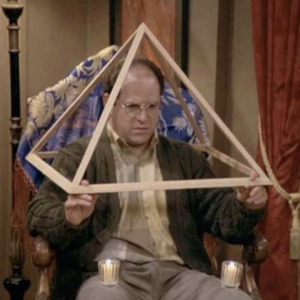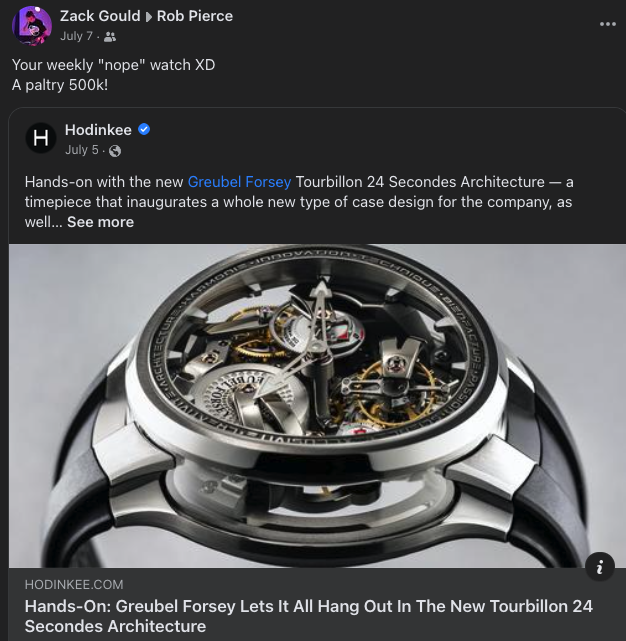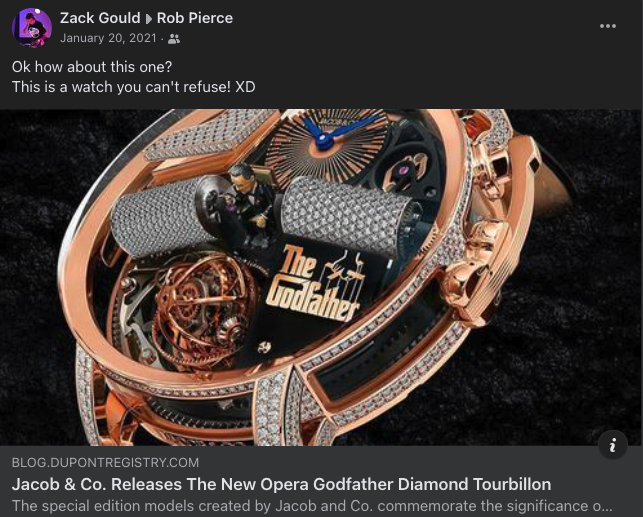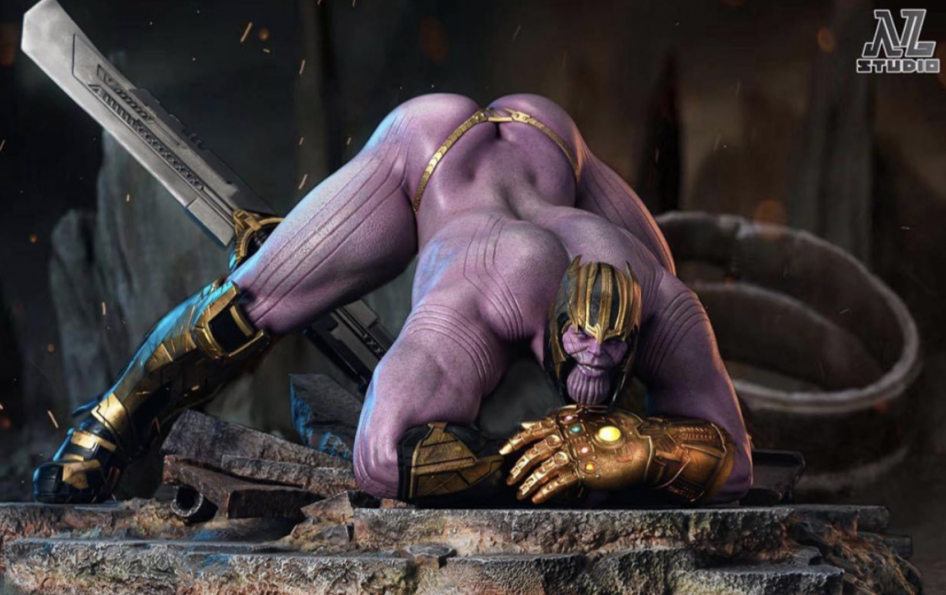Last year, everyone’s favorite indie developer darling, Square Enix, released a glorious role-playing game called Triangle Strategy. I’d been starting to get that itch for something to sink upwards of 60 hours into and I’d read nothing but glowing reviews about its story and turn-based tactical battles. But then whenever I mentioned it to any other Switch owners, no one had even heard of it! So from the get-go, I knew I had to right this wrong and started saving a bunch of screenshots and videos for one of my infamous bi-annual blog posts. AND HERE WE GO! Let me tell you how Triangle Strategy (despite a kind of lackluster name) is awesome and why you should put your precious time and Nintendo / Windows dollars towards it right now!
The Story
Triangle Strategy takes place on the continent of Norzelia and ticks many of the boxes of your typical fantasy world: a post-Renaissance / early modern period with technology levels more advanced than Game of Thrones and about on par with The Kingkiller Chronicle or The Wheel of Time. Magic for healing and combat exist but electricity and guns do not (with one, shall we say, BFG exception towards the end). However unlike most fantasy, this is a world with NO orcs, dragons, ghosts, demons, White Walkers, giant spiders, or ANYTHING OF THAT KIND. Honestly it’s a bit of fresh air that there isn’t a big looming supernatural threat pulling the strings to destroy humanity for once. All of your enemies are human and the main conflict comes down to struggles between the three kingdoms of Glenbrook; Aesfrost; and Hyzante, and various royal houses and factions within each.
“HMM!” You might say. “All that sounds at least a little like Game of Thrones!” Well, that’s true enough. It’s even got a “budget Littlefinger” and “discount Cersei,” as well as more than a few other similarities throughout the cast.

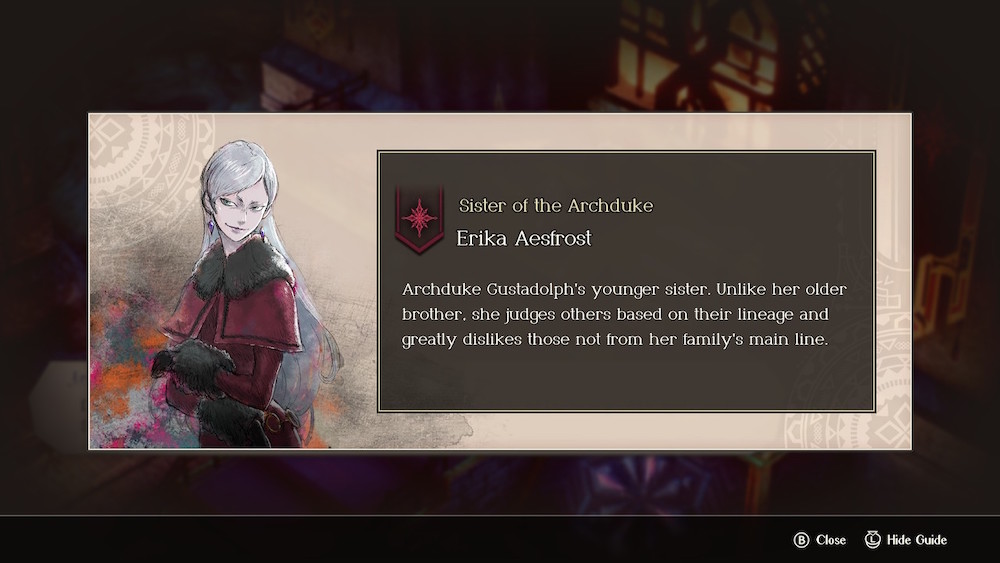
That said, it’s an extremely PG GOT. For most of the game, the characters in your party are nauseatingly polite and apologetic to each other. (It is a Japanese RPG after all!) They do break out the taunts and threats when war erupts and shit starts getting real but it’s still pretty tame stuff.
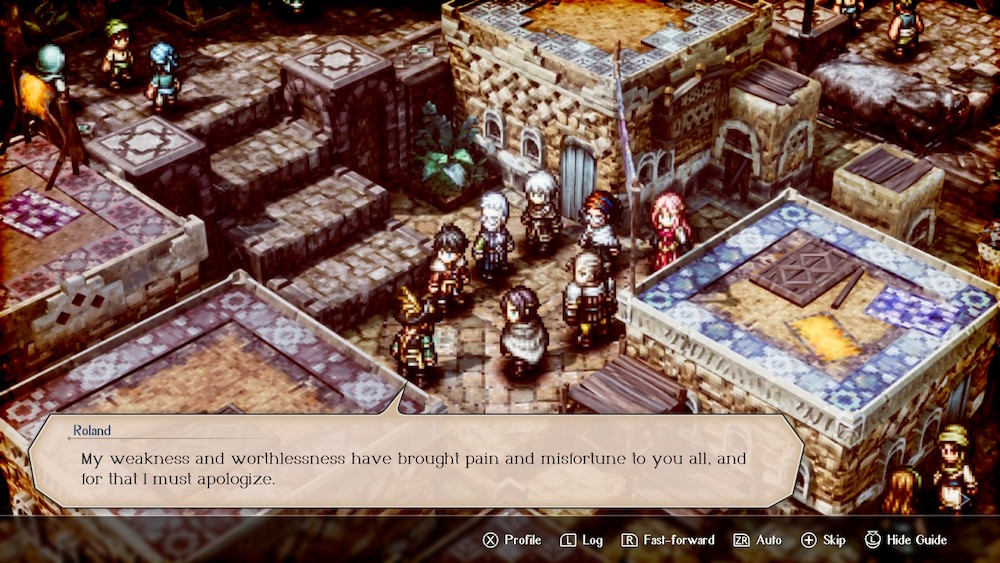
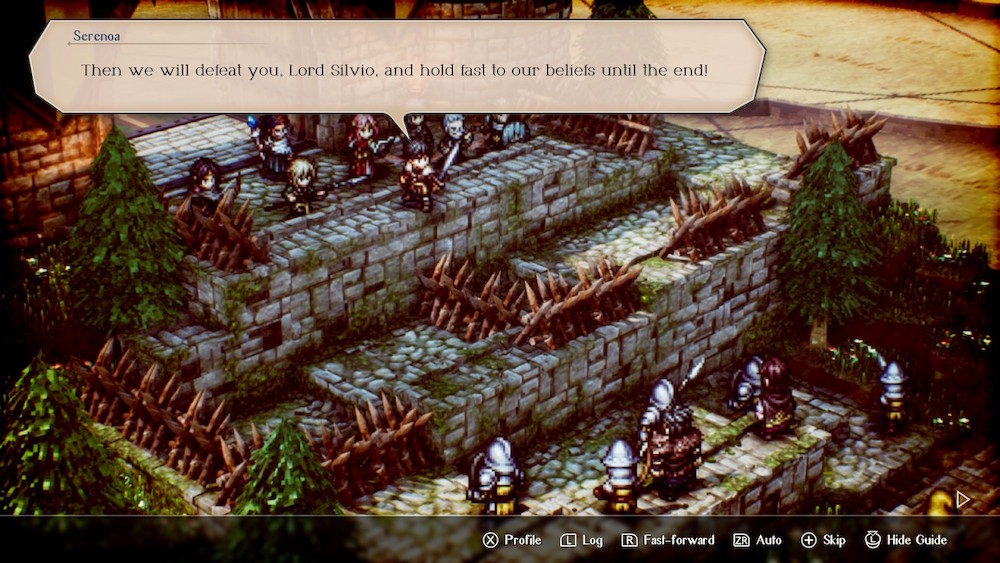
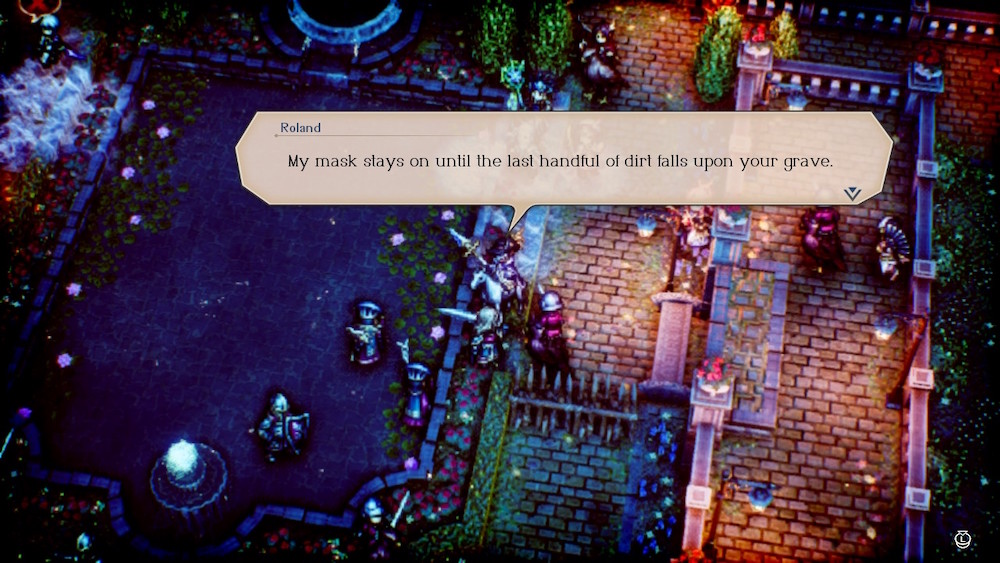
The plot centers on young Serenoa Wolffort, who has recently ascended to lord of his house. Over the course of the campaign, he navigates diplomacy, invasions, counterattacks, trade politics, and balancing loyalty to his friends with responsibilities as a lord towards his people. You can gain up to 30 characters for your “army” but can can only choose 6-10 for any given fight. Depending on the situation, you’ll want to balance attackers with tanks, healing, and offensive magic. There’s no permadeath so if you lose a battle, you just return to your encampment and you can swap out party members or grind for some more experience and try again.
Most of the story is told through lots and lots of dialog between your party members and NPCs in 16(ish)-bit pixelated throne rooms, countrysides, towns, bridges, bandit camps, and various other settings. There are optional side story cutscenes that fill you in on what other factions are talking about and/or plotting. While this does make you privy to most of the realm’s thoughts, there are still quite a few good surprises sprinkled throughout.
You are also going to be hearing about salt. A LOT. Salt isn’t the official currency of the continent but it may as well be. It’s almost as important to Norzelia as spice is in the Dune universe. THE SALT MUST FLOW and much to the frustration of Glenbrook and Aesfrost, it only comes from “the source” in central Hyzante.
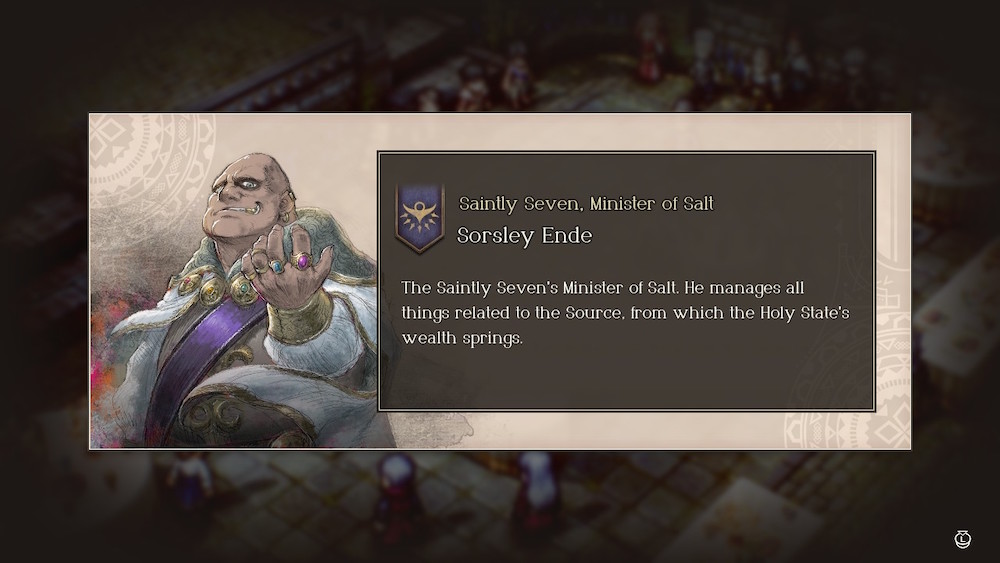
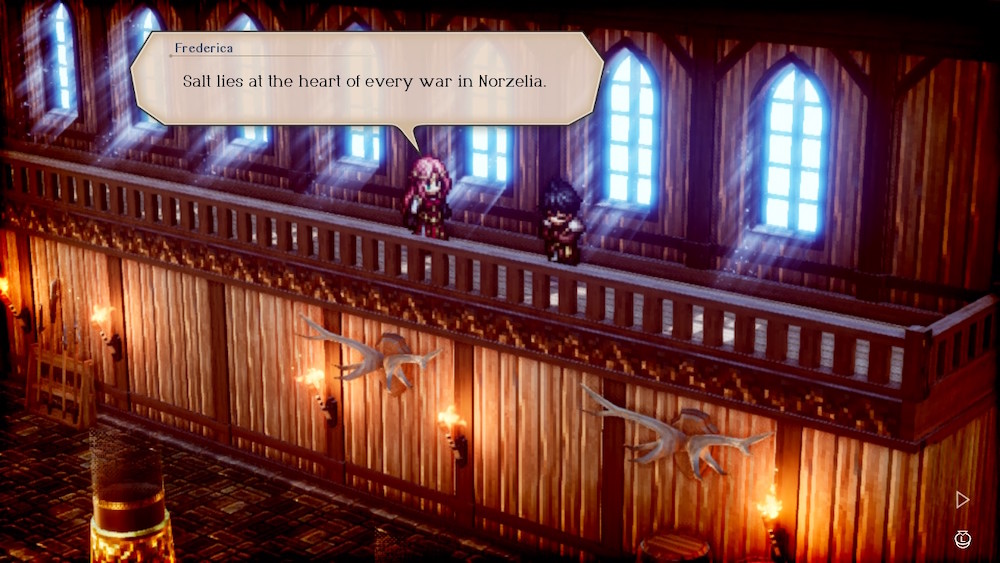
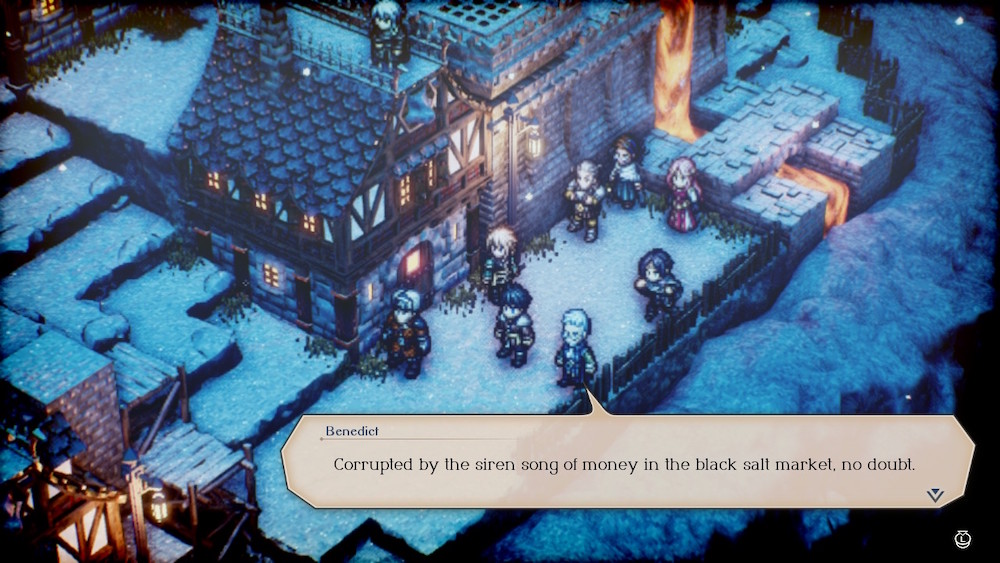
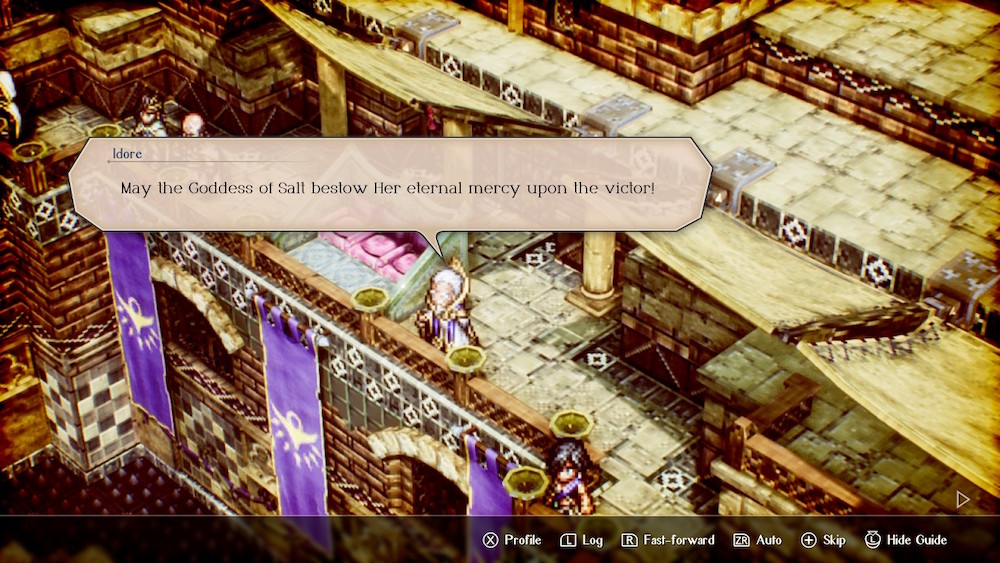
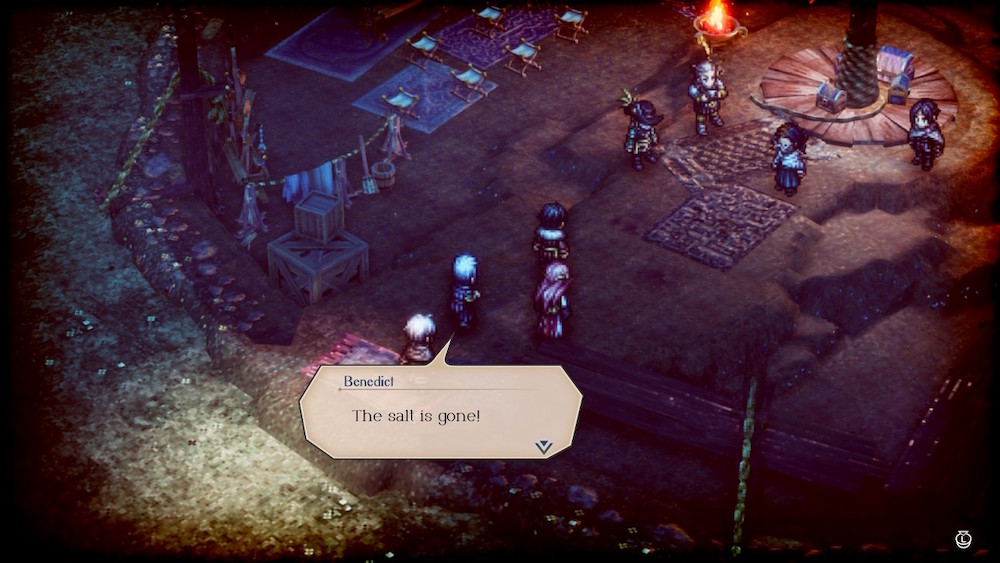
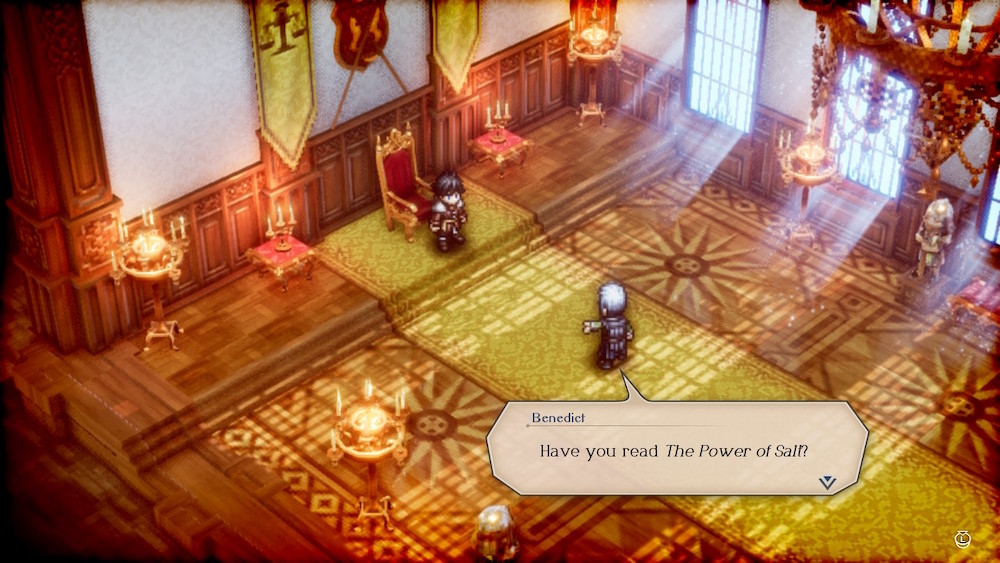
If I have one complaint about the story, it’s that things do take a while to get going. On my first run, I listened to all of the dialog in full so that I could keep track of the ever-expanding cast of characters and soak up the lore. And even though the early chapters do have a few battles and tourneys to keep you engaged, I’d say that things don’t really start picking up until about 3 hours in. But if you can get over that initial hump, I promise that it gets much, much better.
Story Paths and New Game+
I don’t want to spoil anything about the story but one thing I loved which really adds to the replayability is that unlike SOME OTHER Square Enix title* that I put 60+ hours into, Triangle Strategy has not one but FOUR different endgames. There will come a point in the campaign where you’ll need to make a decision that puts you on one of three paths to the end. That is unless you’ve met a specific number of criteria leading up to that point, in which case a fourth “golden route” becomes available. On top of those four endings, there are numerous forks during the campaign where you’ll need to make one of several mutually-exclusive choices that are usually selected by “bringing out the Scales of Conviction!”
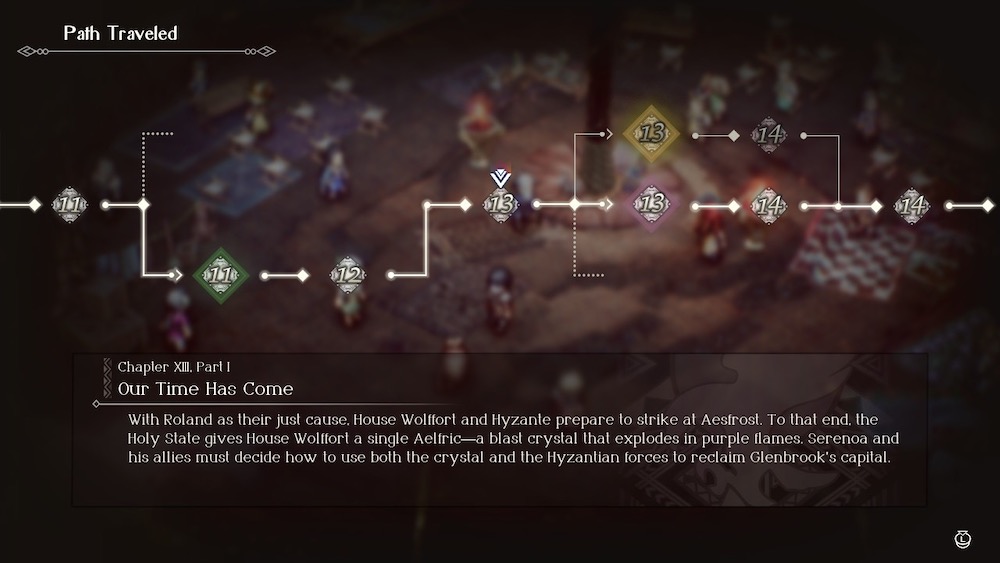
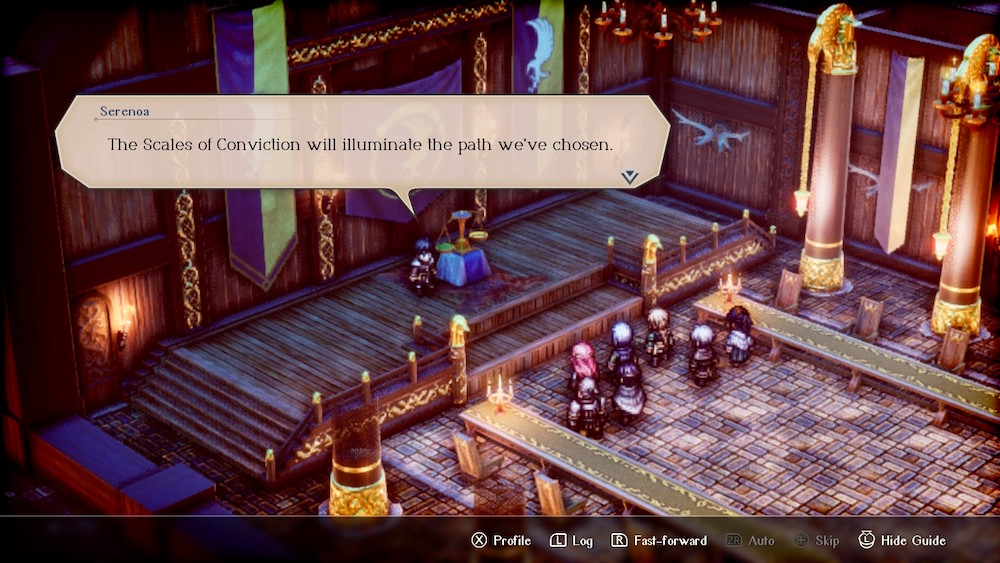
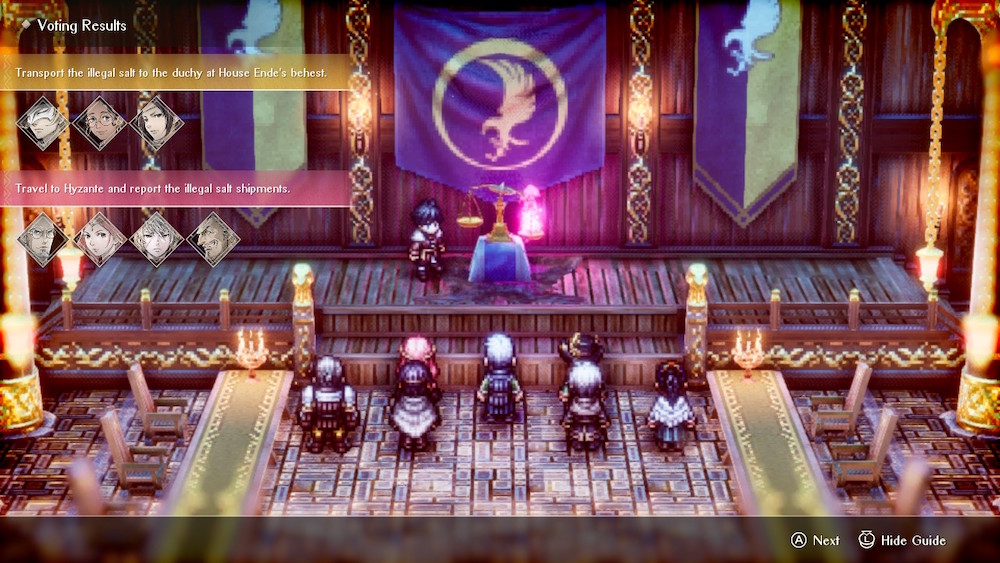
Here you’ll need to convince your core party members to cast their votes for your choice. If you get outvoted (which is something that happened to me at least once on my first run), well, then too bad. The party (and the scales) have spoken.
Fortunately, there is a New Game+ mode, so you can start a new game from your clear file and then go for the paths that you weren’t able to convince your part of during your last run. How you influence your party’s decisions comes from a “conviction” score and choosing certain actions or dialog options add to those convictions. While that score is invisible during the first run, starting in New Game+, you’ll see that by, say, opting to step in and save a village of refugees against slavers gets you a big bonus to your Morality score, whereas choosing a more “what’s in it for me?” option gets you Utility points.
Them’s Fightin’ Words!
What’s a strategy RPG without battles? Each chapter in the game has at least one good long fight, and by that, I mean prepare to spend at least 20-30 minutes on it starting with party selection, positioning, examining enemy strengths and weaknesses, and then the actual battle. I found this pretty satisfying since A) it balanced all of the time that I was watching a room full of pixelated sprites talk to each other and B) the battle system had just the right level of depth to it without being overly complicated. As mentioned above, methods of attack are your traditional RPG swords, sorcery, and buff/debuff items but things like elevation differences and unit placement play huge roles as well. For example if you land a bow shot in an enemy’s back AND manage to do it from a higher point on the map? You’re gonna get some bonus damage and “kudos” which are a secondary form of currency that you can trade for various boons, promotions, and crafting materials in a store.
The game strongly encourages follow-up attacks for additional damage and kudos. Ideally you would have an enemy standing between two of your characters so that when one attacks, your ally gets a free shot in as well. Below is what was probably my most successful follow-up placing in the entire campaign.
On Hard mode you’re going to need every advantage you can get but still not every attack needs to have a perfectly positioned follow-up. As your party levels up and you unlock additional moves and stat bonuses, you can start doing some ultimate moves that really bring the hurt. Or massively buff your party. Or bring more hurt!
Conclusion
With a game of this depth, there’s obviously a ton of other things that I could say about Triangle Strategy. But to be honest, a lot of the fun was coming in fresh, NOT knowing anything about the plot or play mechanics, and just going along for the ride. Then right after getting one ending, diving back in and taking an alternate route to a totally different one. All in all, the world-building is rich, the battle system is addictive, and as you can see from the screen captures, it’s got that nostaligia-done-right vibe that’s all the rage these days.
I give Triangle Strategy 8.5 / 10**. It’s mostly fantastic but held back slightly by a slow start and way too much sitting around listening to dialog. Editing is an art, my friends.
* I loved most of Octopath Traveler, even the repetitive loop of: “go to a new area to find something amiss and do a task” four times for each character. But after doing that for EIGHT CHARACTERS, my disappointment that there wasn’t something tying it all together really can’t be understated. And for the record, no, I don’t think that having the game’s conclusion be an obscure easter egg dungeon which requires even more grinding and fighting the same bosses all over again counts.
** About my rating scale – when it comes to RPGs, 10 is a perfect Knights of the Old Republic.

